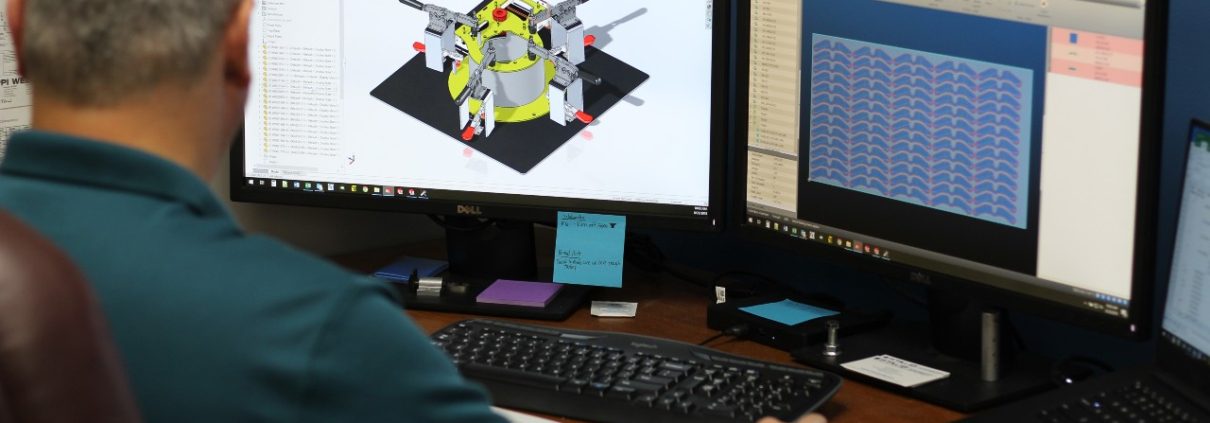As a busy professional buyer, you don’t have any time to waste. When you reach out to a fabricator for a parts quote, you want a quick, accurate response and not a lot of hassle. The last thing you need is an inbox full of questions or a quote that is incomplete. But too often that’s what happens.
In this installment of our Smart Fabrication Sourcing series, we share the six essential items to include in your RFQs to expedite the quoting process, improve quote accuracy, and save you valuable time.
Before you submit your next request for quote (RFQ) from a metal fabrication supplier, we recommend taking some extra time to prepare a complete description of key project requirements. From our experience, nothing slows down the quotation process more than having to stop and ask questions. And nothing is worse for a buyer (and the supplier) than running into production surprises from having missed a key requirement in the quoting process.
Your goal should be to provide enough documentation and production details to eliminate the need for any follow-up clarifications. Trust us. The upfront time you spend will be well worth the backend results! The following tips should help you to check every box on your quote preparation checklist.
- Complete design data. Providing a supplier with up-to-date part drawings and 3D CAD models is essential to the fabrication quoting process. These two items contain most all of the important information that will need to be considered. Drawings identify product tolerancing and key characteristics and 3D CAD models (e.g. STEP, or SolidWorks files) are used to develop laser cutting and forming simulations, which ensure the accuracy of the pricing and keep costs low.
- Material (metal) specifications. Include the material type, nominal thickness, grade (if applicable), and any special sourcing requirements (e.g. DFARS, domestic only). A common issue we see is a material specification that is not readily available in the sheet metal marketplace, such as a hard-metric nominal thickness or an obscure alloy. Alro.com is a good quick online resource you can use to verify general sheet metal availability. The other issue we see is specified materials that are not good for fabrication. For example, 6061 aluminum is great for machining and alright for welding but not good for forming (it cracks). 5052 aluminum is a much better all-around alloy for fabrication.
- Finishing details. Plating and powder coating are the most common finishing options that our customers request. It’s likely not possible to be too specific on these requirements. What slows the quoting process down is if the request is too vague, such as saying that the parts need powder coated “white.” Believe it or not there are many different shades of white as well as a variety of powder types (for various uses) and powder manufacturers. Providing your fabricator with a specific powder manufacturer (eg. Sherwin Williams) and the powder product number takes out all the guesswork. At a minimum, you’ll want to include an RAL number which aids in color matching.
- Final packaging. You want your fabricated product to arrive at its destination in good shape and in a form that’s good for the next step in the process. Identifying how the fabricator should package the product is an important part of that. The packaging might be as simple as stretch wrapped to a pallet or bulk packed in a gaylord box, or you might need custom boxing, especially if the parts have an odd shape or require special protection.
- Quality approval and inspection. Do your products require first article inspection (FAI) or production part approval process (PPAP) quality validation? If so, first make sure your supplier has these robust quality capabilities, and then specify the process validation and inspection requirements for all applicable parts.
- Production volume and timeline expectations. Finally, it’s important to provide your estimated production volume and anticipated deadline. This will aid your supplier in evaluating their workload and capacity to determine if they’ll be able to meet your project requirements or if they’ll need to propose a modified timeline.
If you include these six items whenever you request a fabrication quote, you’ll notice that you get quotes back faster, they’ll be complete and accurate, and you won’t be pestered with nonstop questions.
We hope these tips will help you prepare for your next RFQ. If you have any questions about starting a new project, the team of fabrication experts here at STAUB are happy to speak with you. In our next post, we’ll discuss the high cost of selecting a low-price fabrication bid.




